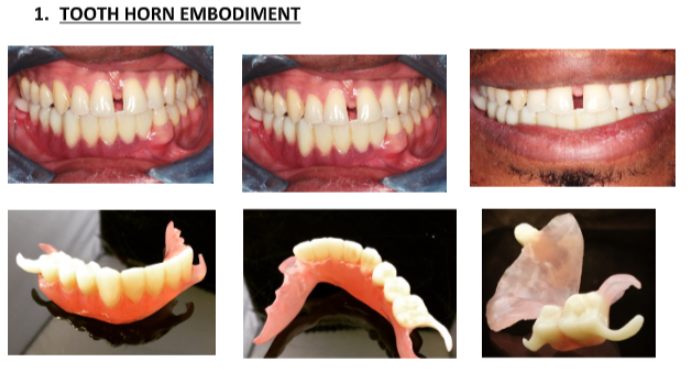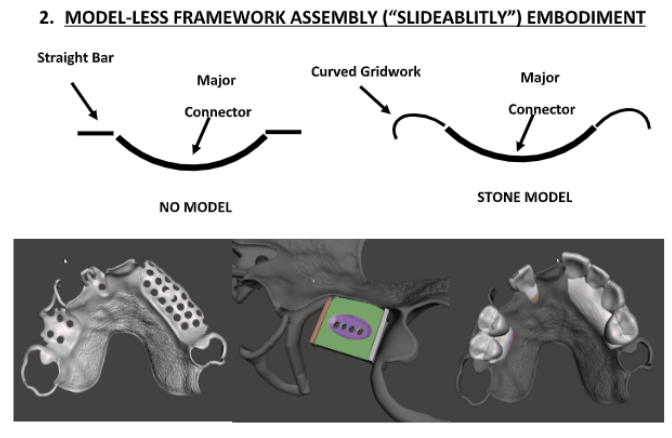Advanced manufacturing method to fabricate removable partial denture
A series of methods and designs to quickly and accurately fabricate partial dentures from intraoral scanning without stone or printed models. The methods include harnessing the abilities of 3d printing, milling, and scanning technology to allow for the most efficient clinical and laboratory outcomes.


Applications
- Removable Partial Dentures / Dental Implants
Key Benefits & Differentiators
- High precision fabrication of prosthetic using intraoral scans and 3D printing/milling
- Allows for the digital incorporation of a wrought wire clasp
- Eliminates unnecessary models / prints (does not require stone model for assembly)
- Allows for the joining of a framework and acrylic base without a model and with fewer appointments and labor
- Eliminates a number of visits by the patient
- Reduces the total amount of calendar time and chair time to complete the partial denture process
Advanced fabrication of removable partial dentures
The removable partial denture is a removable dental prosthesis that replaces some, but not all the teeth in the dental arch. Currently, the fabrication of removable partial dentures often involves a complicated workflow that creates unintended issues. As such, patients may require multiple visits to adjust and correct errors in the partial denture due to outdated fabrication procedures (detrimental effects of duplicating stone models, acrylic shrinkage, etc).
John Madden CDT., with guidance from Prof. Olin at the University of Minnesota has developed a method that expedites the clinical and eliminates laboratory steps of the manufacturing process of the conventional removable partial denture. Using this method, precisely designed dental prosthetics can be produced directly from intraoral scans and 3D printing. This method eliminates the need for labor-intensive fabrication methods that use stone and heat cured acrylic. Additionally, the number of return patient visits can be significantly reduced while also improving patient outcomes.
The technology includes three major components that can be applied to different types of commonly used partial dentures. First, the “tooth-horn” is a replacement for the all-acrylic or flexible partial denture. Second, the framework application which allows for “slideability” of the framework and the denture base to be assembled and adhered without a stone model. Finally, the ability to have a machine bent wire related in the denture base and eliminating the need for a stone model where wrought wire clasps are required. See photos
Phase of Development
TRL: 4-5Prototypes have been fabricated and tested in an emulated environment; some embodiments have been completed clinically. Further development to the framework embodiment with a commercial software partner is required to be best implemented. In addition, software libraries to make design more efficient in common dental software is required. Some embodiments can be completed in existing dental software. All materials required are already FDA approved for these applications for 3D printing and milling. Very little further FDA approvals should be required (if any).
Desired Partnerships
This technology is now available for:- License
- Sponsored research
- Co-development
Please contact our office to share your business’ needs and learn more.
Researchers
- Paul S. Olin, DDS, MS Professor, Department of Restorative Sciences
- John M. Madden, CDT Department of Clinical Systems